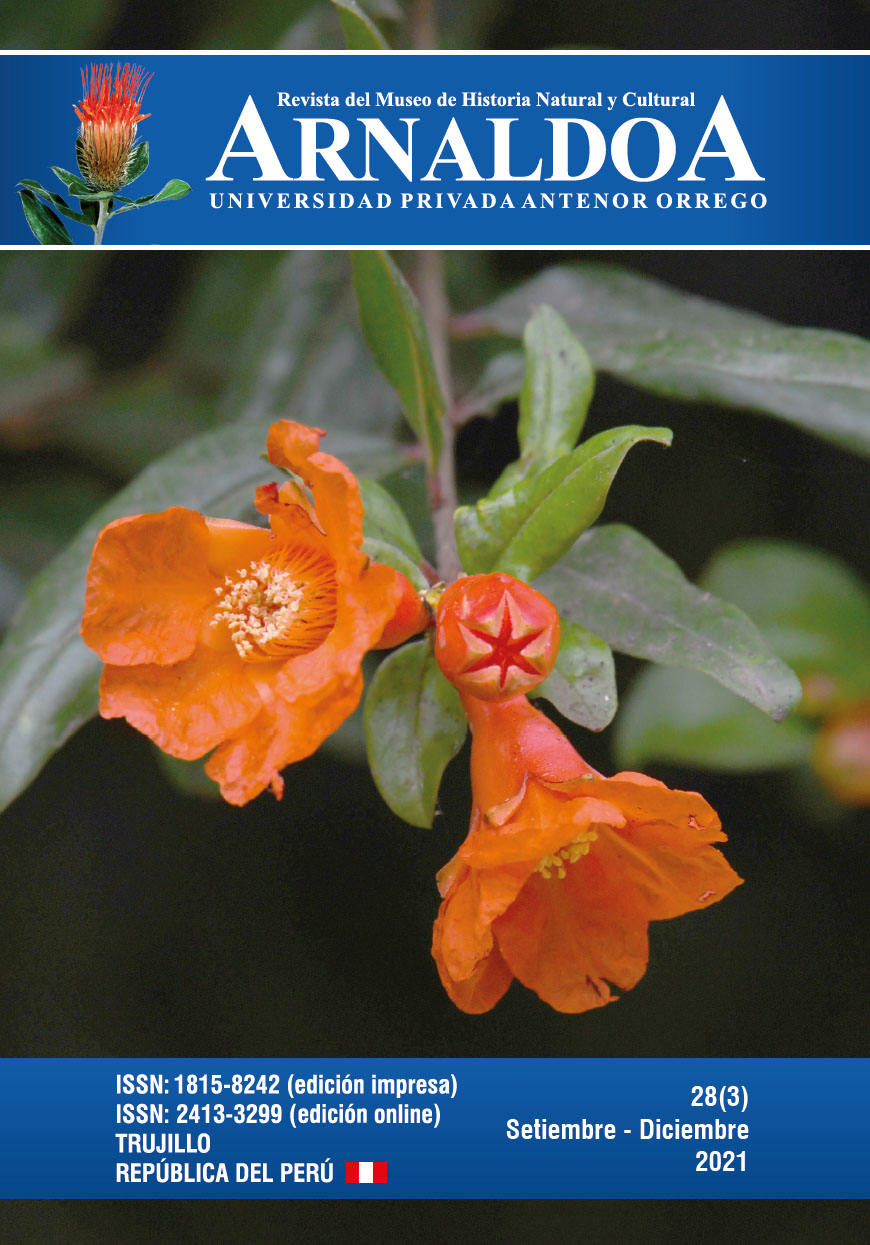Phytochemicals, nutritional value, and benefitsof Physalis peruviana L. (Solanaceae)
DOI:
https://doi.org/10.22497/arnaldoa.311.31106Keywords:
Physalis peruviana, phytochemicals, nutrition, health benefitsAbstract
This research provides a comprehensive review of Physalis peruviana (Solanaceae), known as
“aguaymanto”, focusing on phytochemicals, nutritional value, and associated benefits. In terms
of phytochemicals, the plant exhibits notable diversity, including terpenes, phenolic compounds,
alcohols, steroids, and whitanolides. Among them, carotenoids and flavonoids stand out, with the
recent identification of phytol in the calyx and leaves, suggesting its participation in the synthesis
of carotenoids. Nutritional value analysis reveals that “aguaymanto” has low levels of fat, high
moisture content, and an optimal pH to enhance the activity of vitamin C. The seeds display a
notable abundance of essential fatty acids, while the fruit serves as a significant source of vitamins
A, B3
, B6
, C, and E, as well as minerals such as calcium, potassium, phosphorus, and magnesium.
Regarding health benefits, antioxidant, antibacterial, and antiproliferative properties are
highlighted, particularly in calyxes and leaf extracts. Additionally, the historical use in folk medicine
is emphasized, supported by antihepatotoxic, antifibrotic, and antidiabetic properties. The research
concludes by underscoring the growing interest in P. peruviana due to its nutritional content. The
need to optimize the bioavailability of its components is emphasized, and “aguaymanto” is proposed
as a promising component in functional foods and phytomedicine. However, the importance of
conducting more in-depth assessments in epidemiological studies involving humans is emphasized
to scientifically support its health benefits.
Downloads
Downloads
Published
Issue
Section
License
Copyright (c) 2025 Cynthia Ramos, Pedro Lezama Asencio , Edinson Larco León, Pablo Chuna Mogollón, Manuel Hidalgo

This work is licensed under a Creative Commons Attribution 4.0 International License.
By submitting a paper to the journal, it is understood that the authors agree to transfer the publication rights to the journal once it is accepted.
It is permitted to share and adapt the contents of this journal in any medium or format always if the original source is properly cited and there are not commercial purposes.







